02-17-2014, 02:38 AM
Wils: Thanks! Glad you see improvement <3
Jaik: Yeah failing is okay, as long as there are a few successes inbetween as well :P And yeah, I'll keep at it. I'm very determined to take that monster called perspective head on this time. Oh and I'm fine with you laughing at my failures as long as you point out how to improve at the same time :P
Alright. So. Two point homework from mind.
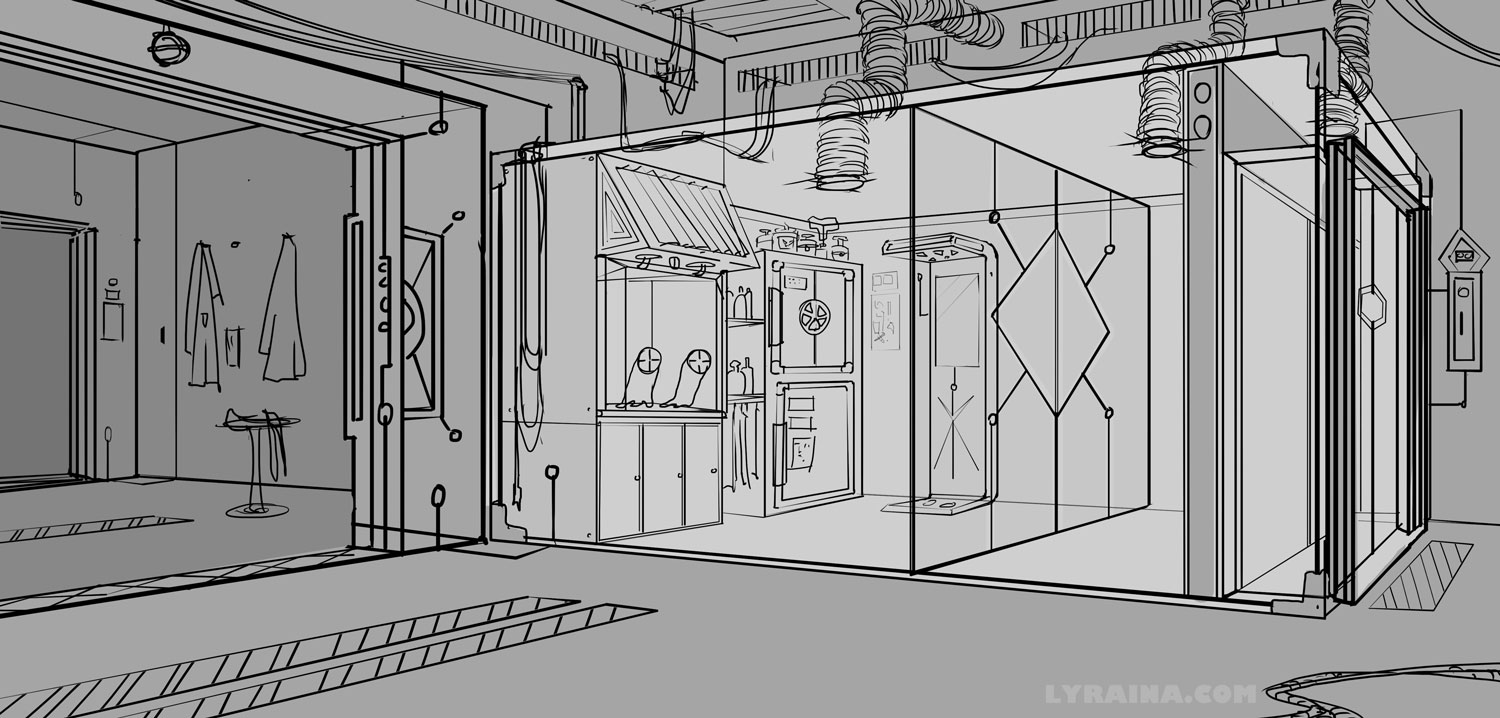
Tried to fix the upper parts of the shrine that were wrong last time.
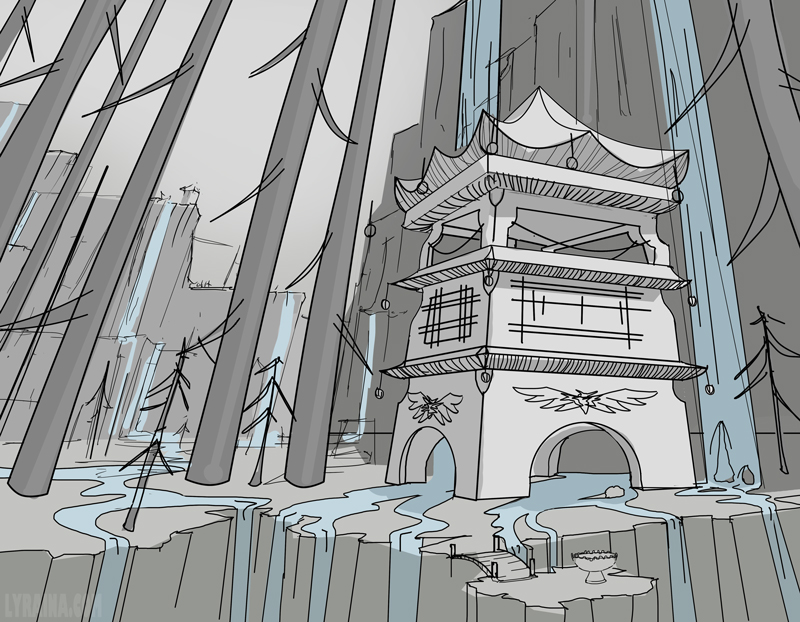
Rnd from photo. This is not very helpful a exercise I think.
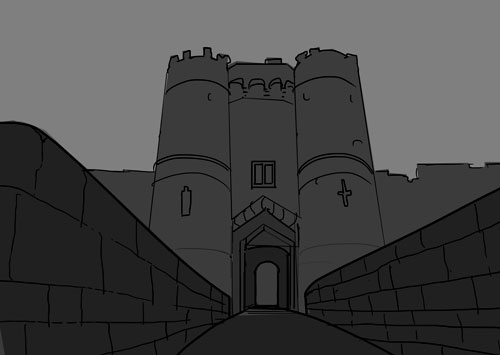
Here I have tried to reverse engineer all those concepts I am learning like cone of vision, station point etc from photos. Sometimes I feel like I'm just about to understand it but I am missing one part of the puzzle so nothing can fall in place... so I'm just writing this down because it helps me think... not sure if it makes sense, but if anyone can say something about it I'm grateful, too. In this case, I don't know how to place the center line (of vision) on the picture plane. As I understand it the line of vision will always be parallel to the ground as long as I look straight ahead, and defines the direction where I look at (so it is middle of the cone of vision). The point where it crosses the horizon line is the center of vision (the exact point where I am looking at).
I read somewhere that in a photograph that is not cropped, the line of vision will always be in the middle of the picture plane (makes sense for me). But what if a photo is cropped, or if I am doing a drawing which is not placed exactly in the middle of my constructed cone of vision but placed a bit more to the right or left? While I could try to do this with just following the rules of establishing the i.e. 60° cone of vision, I don't know how to do it the other way around using a reference as basis. So clearly I'm not fully understanding it yet. I'm also not sure how this relates to one or two vanishing points.
In the image below I just decided that the line of vision probably is in the middle of the image (as I didn't know to determine it), then placed a square on top of it, thus determining the station point. The square is placed so that it hits the vanishing points, because I read something about VPs being placed 90°s apart (a new concept for me as well...)
I'm also grateful for any advice as to how I should practice/apply that, atm I try to just understand all those principles with various books and videos. The reverse engineering from photos didn't work too well, so next I will try to do my own drawings using this cone and station point stuff. I feel very stupid for not grasping those concepts more easily, one would think someone with a scientist brain should be able to understand this.
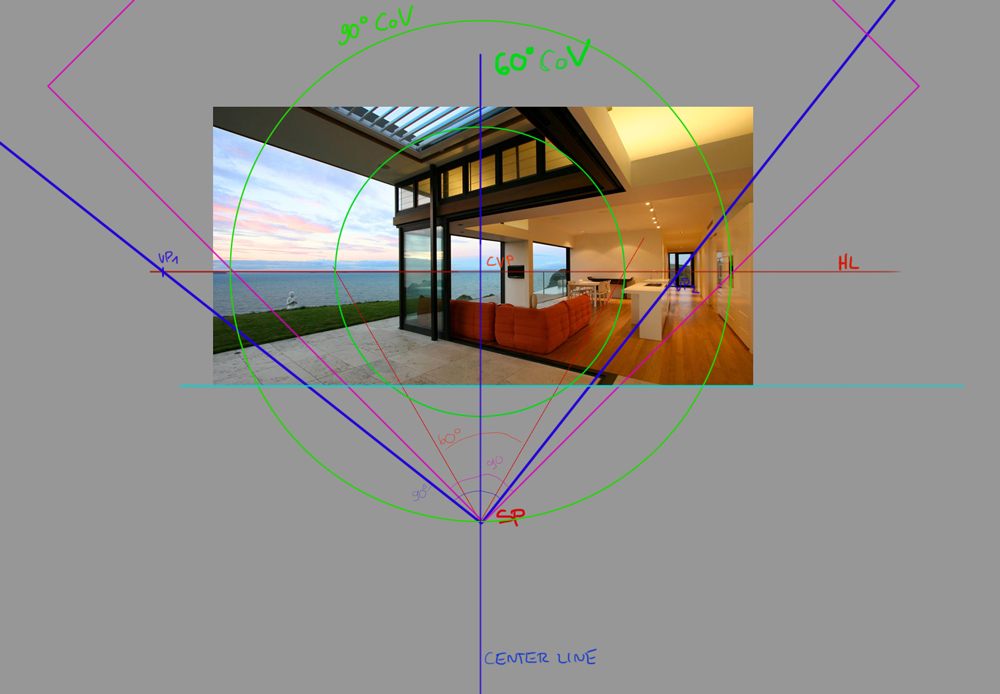
Quick chick when too tired to do other stuff. From ref
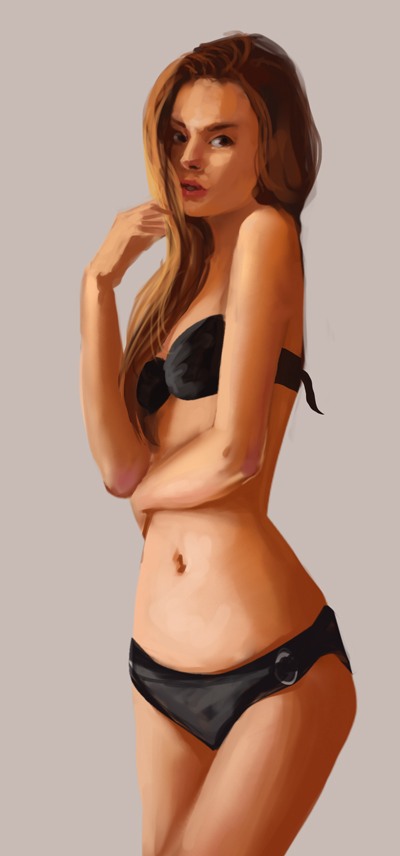
BS final!
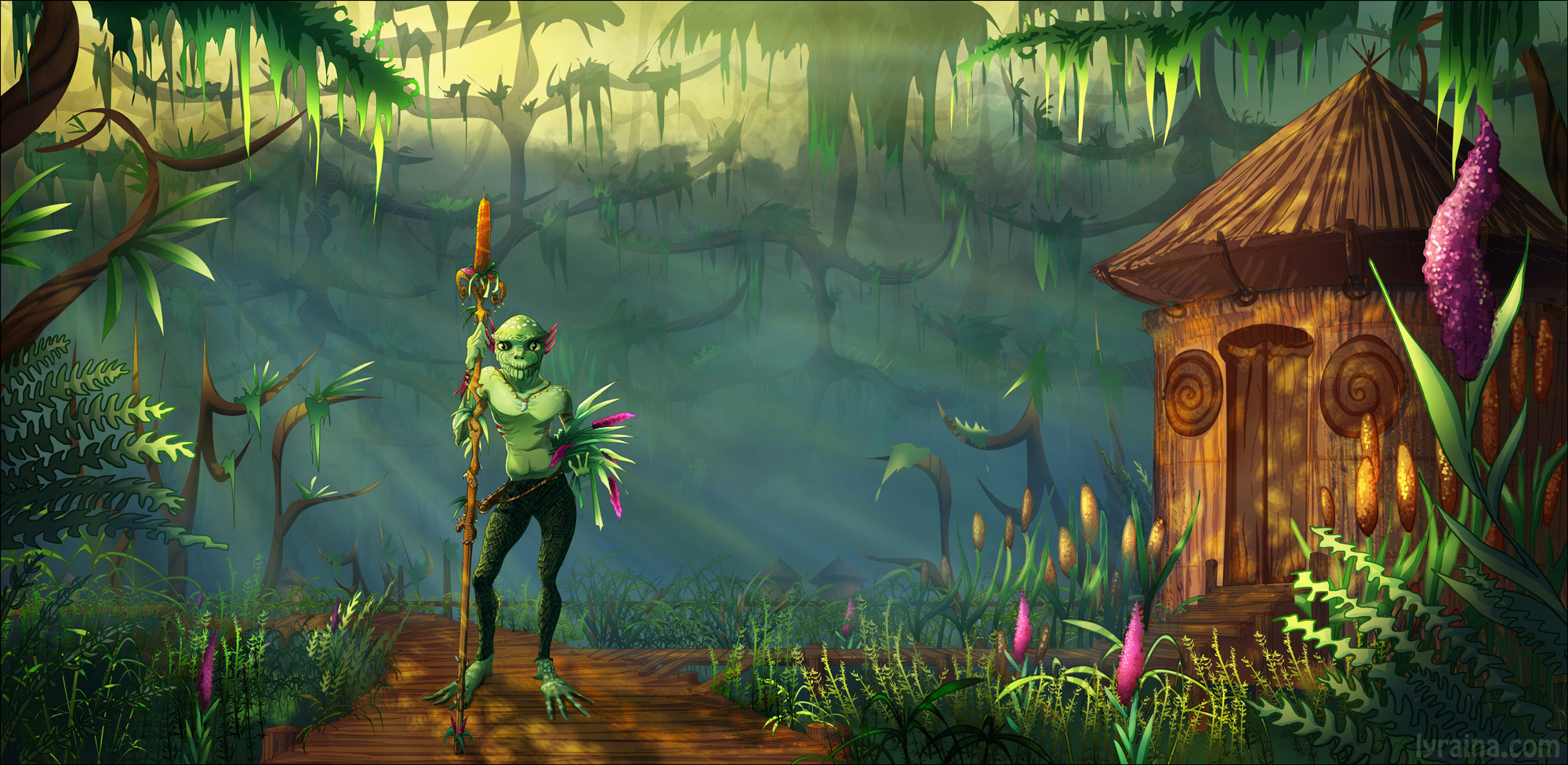
Jaik: Yeah failing is okay, as long as there are a few successes inbetween as well :P And yeah, I'll keep at it. I'm very determined to take that monster called perspective head on this time. Oh and I'm fine with you laughing at my failures as long as you point out how to improve at the same time :P
Alright. So. Two point homework from mind.

Tried to fix the upper parts of the shrine that were wrong last time.

Rnd from photo. This is not very helpful a exercise I think.

Here I have tried to reverse engineer all those concepts I am learning like cone of vision, station point etc from photos. Sometimes I feel like I'm just about to understand it but I am missing one part of the puzzle so nothing can fall in place... so I'm just writing this down because it helps me think... not sure if it makes sense, but if anyone can say something about it I'm grateful, too. In this case, I don't know how to place the center line (of vision) on the picture plane. As I understand it the line of vision will always be parallel to the ground as long as I look straight ahead, and defines the direction where I look at (so it is middle of the cone of vision). The point where it crosses the horizon line is the center of vision (the exact point where I am looking at).
I read somewhere that in a photograph that is not cropped, the line of vision will always be in the middle of the picture plane (makes sense for me). But what if a photo is cropped, or if I am doing a drawing which is not placed exactly in the middle of my constructed cone of vision but placed a bit more to the right or left? While I could try to do this with just following the rules of establishing the i.e. 60° cone of vision, I don't know how to do it the other way around using a reference as basis. So clearly I'm not fully understanding it yet. I'm also not sure how this relates to one or two vanishing points.
In the image below I just decided that the line of vision probably is in the middle of the image (as I didn't know to determine it), then placed a square on top of it, thus determining the station point. The square is placed so that it hits the vanishing points, because I read something about VPs being placed 90°s apart (a new concept for me as well...)
I'm also grateful for any advice as to how I should practice/apply that, atm I try to just understand all those principles with various books and videos. The reverse engineering from photos didn't work too well, so next I will try to do my own drawings using this cone and station point stuff. I feel very stupid for not grasping those concepts more easily, one would think someone with a scientist brain should be able to understand this.

Quick chick when too tired to do other stuff. From ref

BS final!








